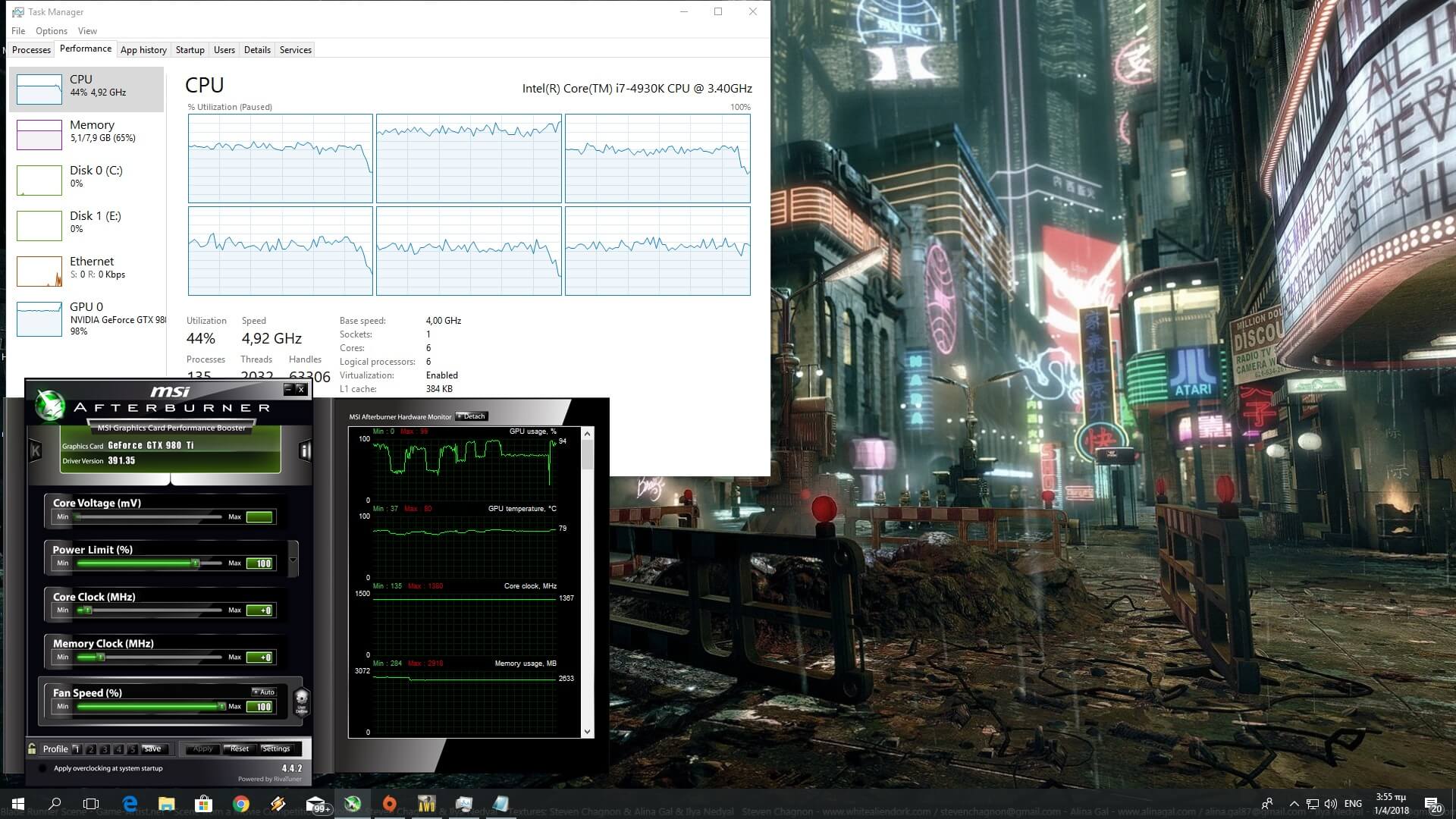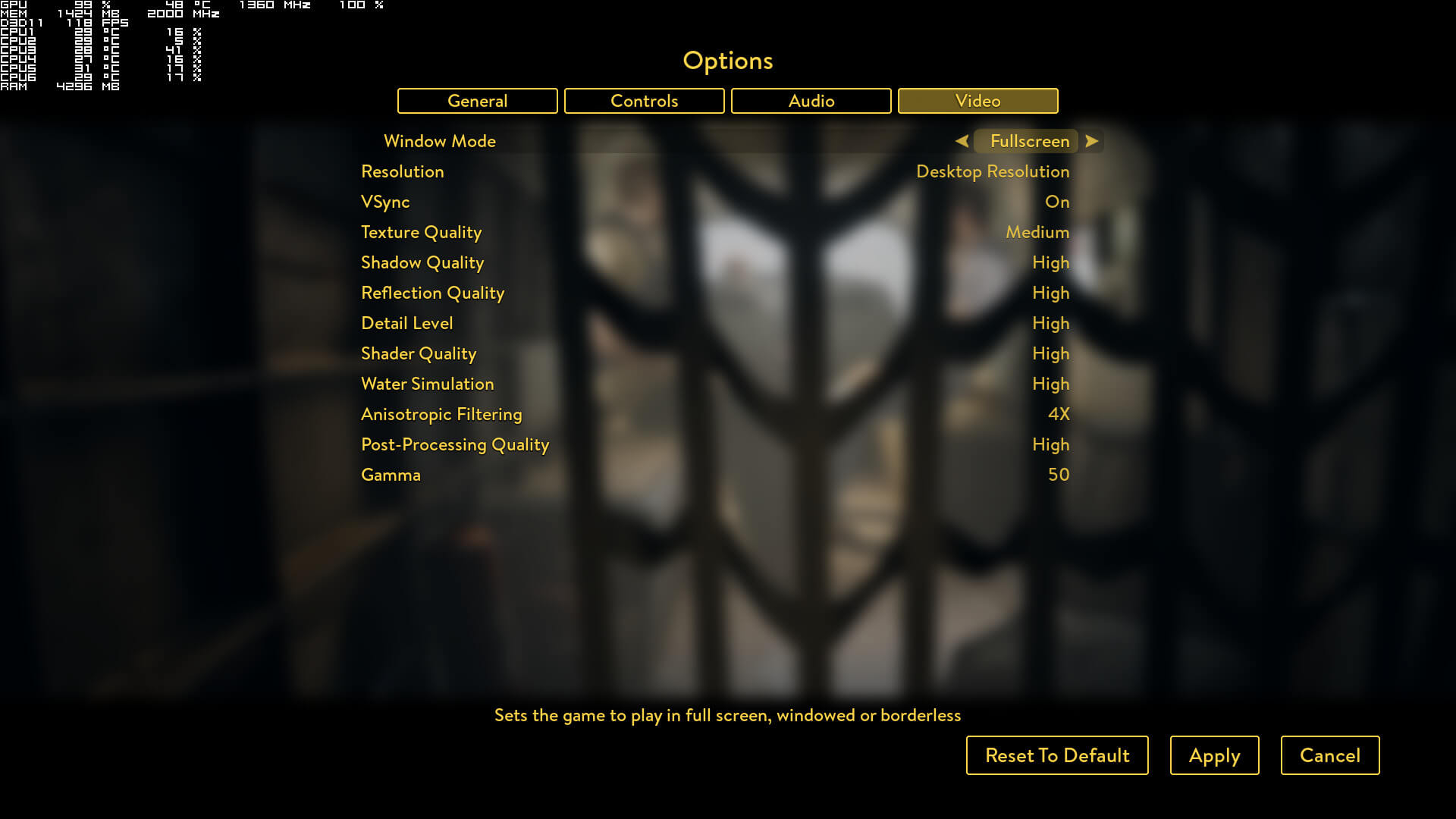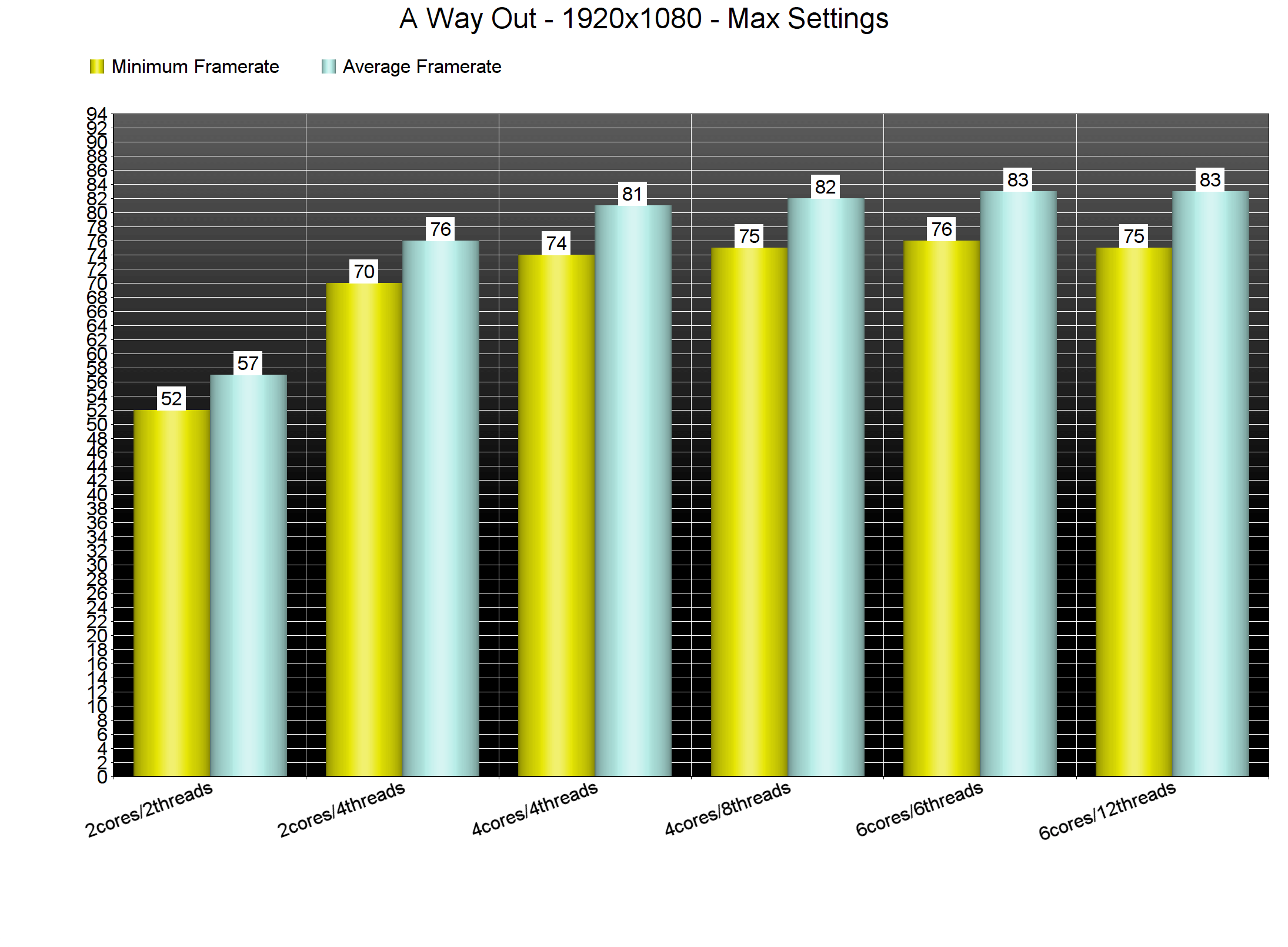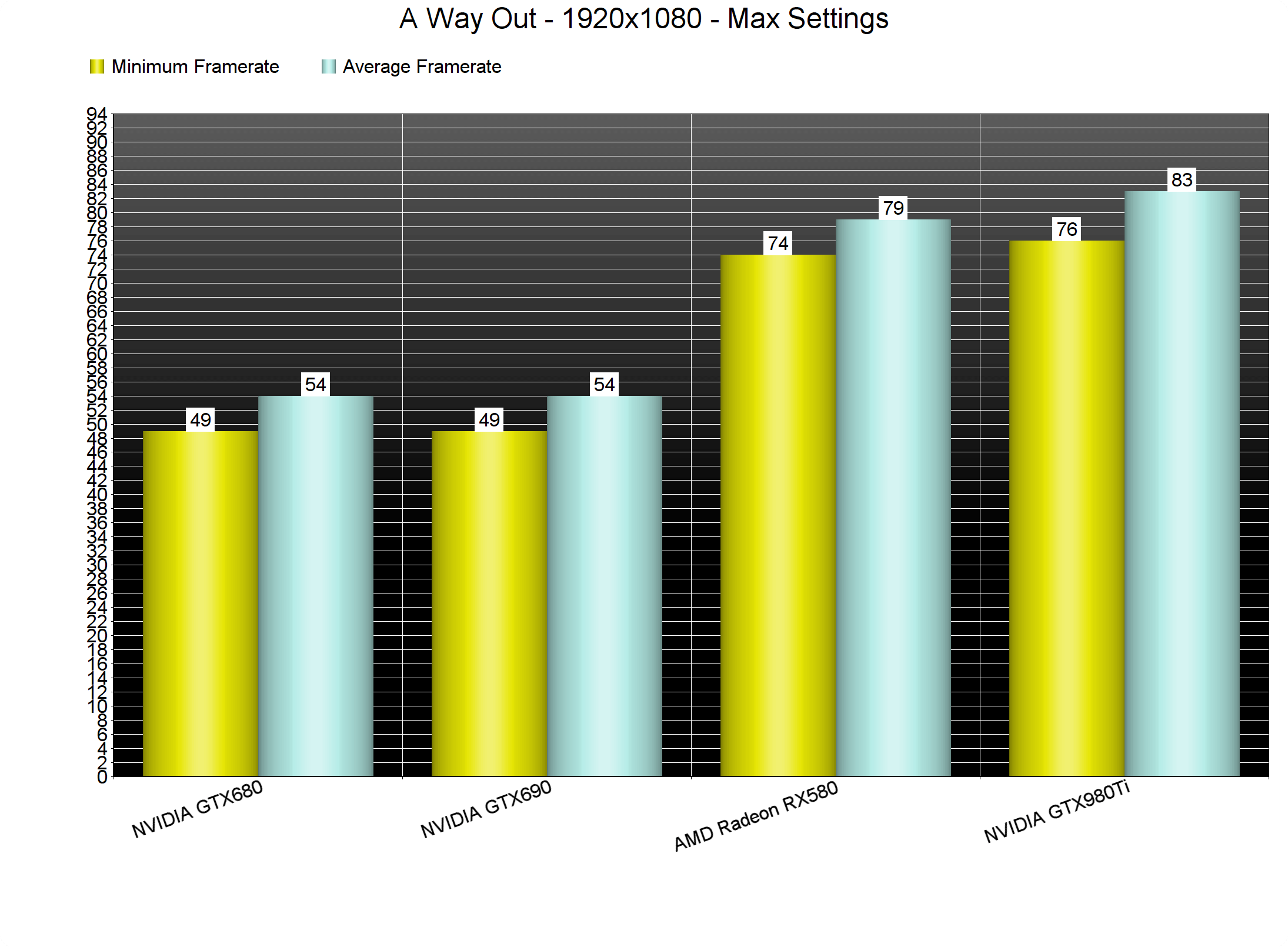Hazelight’s co-op prison game, A Way Out, was released last week. In this game, players will take on the role of Leo and Vincent who must work together through their riveting escape from prison and beyond. Electronic Arts has provided us with a review code so it’s time now to benchmark it and see how it performs on the PC platform.
For this PC Performance Analysis, we used an Intel i7 4930K (overclocked at 4.2Ghz) with 8GB RAM, AMD’s Radeon RX580, NVIDIA’s GTX980Ti and GTX690, Windows 10 64-bit and the latest version of the GeForce and Catalyst drivers. NVIDIA has not included any SLI profile for this game, meaning that our GTX690 performed similarly to a single GTX680.
A Way Out comes with a few graphics settings. PC gamers can adjust the quality of Textures, Shadows, Reflections, Detail Level, Shaders, Water, Anisotropic Filtering and Post-processing. Even though the game displays custom resolutions, though, we were unable to use a resolution higher than 1080p. Lower resolutions worked fine, so we don’t know what is causing this issue (setting our desktop to anything higher than 1080p and using the in-game ‘Desktop Resolution’ setting also didn’t work).
[nextpage title=”GPU, CPU metrics, Graphics & Screenshots”]
In order to find out how the game performs on a variety of CPUs, we simulated a dual-core and a quad-core CPU. A Way Out can be easily enjoyed even on a dated system. Without Hyper Threading enabled, our simulated dual-core system was able to push a minimum of 52fps and an average of 57fps. When we enabled Hyper Threading, our simulated dual-core was able to offer a constant 60fps experience. Similarly, our six-core and our simulated quad-core systems were able to run the game with more than 60fps at all times.
Now while the game can be enjoyed with 60fps on a variety systems, it’s not really optimized for higher framerates. As we can see in almost all screenshots, both our CPU and GPU were under-used. Since we were not limited by our RAM or VRAM or by a single CPU core, and since the game is using the DX11 API, this could very well be due to the increased number of drawcalls. The reason we are saying this is because our GPU usage was way higher when there weren’t many NPCs on-screen (in other words there were fewer overall drawcalls to process in those scenes which resulted in higher framerates and better GPU usage).
Both our NVIDIA GTX980Ti and our AMD Radeon RX580 were able to run the game with more than 60fps at all times at 1080p. Unfortunately, and as we’ve already said, 1440p and 4K did not work. Due to the lack of an SLI profile, our GTX690 performed similarly to a GTX680 and ran the game with a minimum of 46fps and an average of 54fps.
Since A Way Out is a game from a small studio, you should not expect visuals that will push the graphical boundaries of third-person titles. It looks good but there is nothing particularly great here. Although the characters are not up to what triple-A games have achieved, they aren’t lacking details and they aren’t blocky. Its lighting system is pretty good and most of the textures are quite detailed. A Way Out’s visuals are functional but they are nothing worth writing home about.
In conclusion, PC gamers won’t need high-end systems in order to enjoy A Way Out. The game supports both mouse+keyboard and controllers, and we did not experience any mouse acceleration or smoothing issues. We also did not experience any crashes. There are some optimization issues when it comes to higher framerates (that may never be resolved) however – and as we’ve already said – a wide variety of PC systems can achieve a 60fps experience.
Enjoy!

John is the founder and Editor in Chief at DSOGaming. He is a PC gaming fan and highly supports the modding and indie communities. Before creating DSOGaming, John worked on numerous gaming websites. While he is a die-hard PC gamer, his gaming roots can be found on consoles. John loved – and still does – the 16-bit consoles, and considers SNES to be one of the best consoles. Still, the PC platform won him over consoles. That was mainly due to 3DFX and its iconic dedicated 3D accelerator graphics card, Voodoo 2. John has also written a higher degree thesis on the “The Evolution of PC graphics cards.”
Contact: Email

























